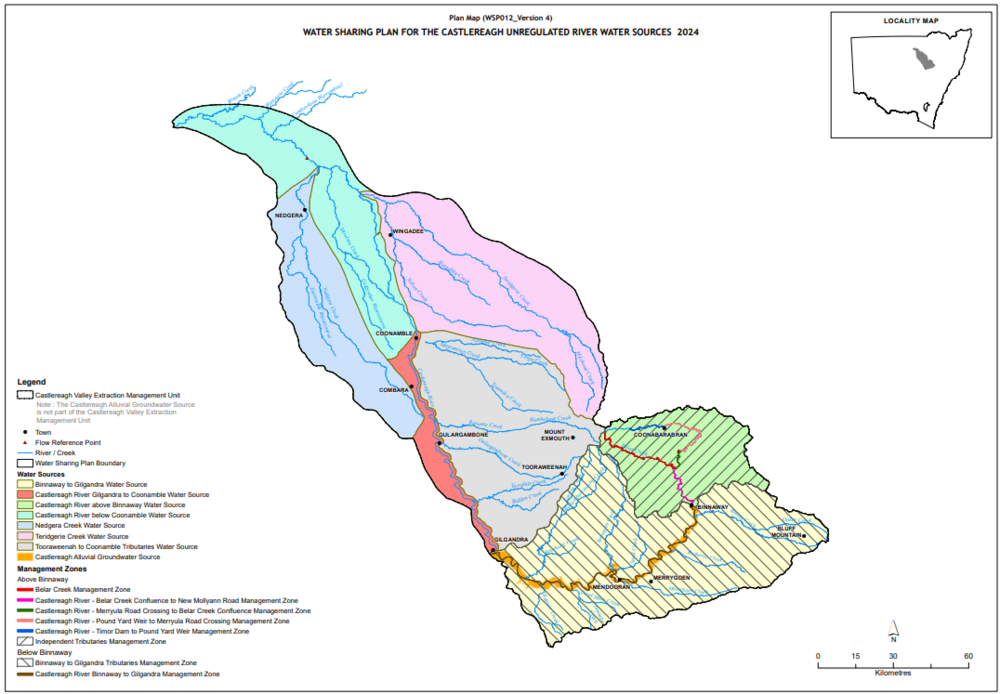New Water Sharing Plan for Castlereagh Catchment open for feedback
Lee O'Connor
06 October 2023, 8:20 PM
 A pipe from a spearpoint can be seen in the sand of the Castlereagh riverbed - a lifeline to rural properties that generally can supply water even when water flows are not visible on the surface.
A pipe from a spearpoint can be seen in the sand of the Castlereagh riverbed - a lifeline to rural properties that generally can supply water even when water flows are not visible on the surface.The new Water Sharing Plan for the seven water sources that make up the Castlereagh Catchment is working its way through the public consultation process.
The Plan will lay out the rules for water use across the catchment for the next decade.
People across the region had their chance to hear the proposed changes at an online webinar last Tuesday 26 September although only five members of the public (including two media staff)
attended.
There will be opportunity for face to face involvement with meetings planned for Gilgandra and Coonabarabran.
Water users, Aboriginal groups, conservationists, industry and the wider public are able to provide input on the new plan up until 29 October 2023.
“We take all feedback from stakeholders on board which allows us to finesse the plan to ensure it strikes the right balance between safeguarding town water supply, protecting the environment and
maximising economic opportunity,” said Executive Director of Water Planning from the Department of Planning and Environment, Giselle Howard.
“Locals across the Castlereagh River lived through the last drought, the worst on record since the 1890s, and know all too well that another dry spell is fast approaching which is why having
robust water management frameworks in place is essential.
“Water sharing plans are legal instruments which must be renewed every 10 years so our message to the community is clear: don’t miss an opportunity to have your say.”

Some residents from the Combara area, between Gulargambone and Coonamble, rely entirely on river water for their household supply.
Among the updates and amendments in the draft Plan are some changes that may affect water users downstream of Gilgandra.
Notable in the re-write is the proposal to allow new works and water trading into the Nedgera Creek, Teridgerie Creek and Tooraweenah to Coonamble water sources which have been determined to have ‘low to medium environmental value’.
During the webinar attendees were told there had been “no demand” for this type of access the DP&E are trying to encourage trade where they can and that this presented an opportunity.
Ms Howard said that the department is “permitting trading into and within water sources for the first time to stimulate economic activity but also encourage water trading away from high conservation areas.”
The proposal includes up to 37 megalitres (ML) of additional water to be made available across the three water sources which includes creeks such as Weetalibah, Nebea, Magometon, Wambelong, Baronne and Garrawilla, among others.
However a new inclusion in the Plan prohibits new works or trades within three kilometres of Ramsar-listed or significant wetlands.
According to the draft Plan there are ten significant wetlands in the Tooraweenah to Coonamble water source, and four each in the Castlereagh River Below Coonamble and the Teridgerie
Creek water sources - comprised of springs, waterholes and lagoons.
Limits on new spear points are also proposed under the replacement Plan whereby spears are not to exceed 8 metres in depth in the section between Binnaway and Coonamble.

A rising river in Coonamble in 2022.
Further upstream, changes to ‘cease to pump’ rules will mean that those above Binnaway will need to monitor two telemetered gauges to ensure they do not pump when flows fall below 1 ML/day.
Below Binnaway, the current ‘cease to pump’ rules will remain, where users are not permitted to pump from the main streams when ‘there is no visible flow’ or from in-river or off-river pools which are below full capacity.
“Compared to the visible flow rule a cease to pump limit of 1ML a day is estimated to increase the average annual cease to pump from about 1 to5% to 9 to 22% of the time,” the webinar presenter said.
“Setting it at 1ML/day was a balance between environmental needs and the needs of water users.
“For other water sources in the Castlereagh Water Sharing Plan the existing access rule, where no pumping is permitted where there is no visible flow, is unchanged.
“This is because in other parts of the catchment there is limited accurate streamflow gauging, it’s a largely ephemeral system as one moves downstream, and for one section between
Binnaway and Coonamble there is some sub-surface extraction permitted when there is no visible flow which makes these gauge-based access rules impractical.”
Also upstream is a proposal to allow local water utilities to apply to build in-river dams in third order streams “if they are for town water supply purposes to support critical human needs”.

People have until Sunday 29 October to make their submission on the draft plan.
As well as submitting feedback online, stakeholders can book a phone call with a department staff member to discuss the draft plan directly or attend a face-to-face information session in Coonabarabran on 10 October or Gilgandra on 11 October.
It was explained that the DP&E had elected to not to hold a session in Coonamble based on the number of licensed water users.
Coonabarabran and Gilgandra shires have the major water users in the area - most licence holders are located there.
Click here for more information on how to participate.
WHAT'S ON



